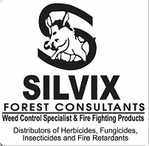This is a summary of a new study done by;
Natalia Lukomskaa, Martin F. Quaasb and Stefan Baumgartnerc ,
Institute of Evolutionary Biology and Environmental Studies, University of Zurich, Switzerland
Department of Economics, University of Kiel, Germany,
Department of Sustainability Sciences and Department of Economics,
Leuphana University of Luneburg, Germany
December 13, 2010
View their online page...
Download the full study
Natalia Lukomskaa, Martin F. Quaasb and Stefan Baumgartnerc ,
Institute of Evolutionary Biology and Environmental Studies, University of Zurich, Switzerland
Department of Economics, University of Kiel, Germany,
Department of Sustainability Sciences and Department of Economics,
Leuphana University of Luneburg, Germany
December 13, 2010
View their online page...
Download the full study
| bushencroachmentpaper.pdf |
Bush encroachment is considered to be one of the most extensive forms of degradation in rangelands in arid and semi-arid regions of the Earth (Sweet 1998, de Klerk 2004, Joubert et al. 2009, Schr¨oter et al. 2010). With arid and semi-arid areas covering about one quarter of the land surface of the Earth, between 50 and 80% of these areas being used as rangelands, and more than one billion people earning their livelihood directly from livestock farming in these areas (Millennium Ecosystem Assessment 2005), bush encroachment is a major worldwide problem. In Namibia, for example, where the economic well-being of more than two thirds of the population depends directly or indirectly on agriculture and 65% of the national agricultural output is produced on commercial rangeland (Mendelssohn et al. 2003), bush encroachment severely restricts profitability of cattle farming (Espach 2006); the same goes for South Africa (Stuart-Hill 1987, B¨orner et al. 2007) or Uganda (Mugasi et al. 2000).
From an ecological-economic point of view, rangelands in (semi-)arid regions are savannahs that are characterized by dynamic interaction and coexistence of woody and herbaceous vegetation, i.e. bushes and grass, under the influence of stochastic precipitation and bushfire, and that are managed for the purpose of livestock grazing (Knoop and Walker 1985, Perrings and Walker 1997, Wiegand and Jeltsch 2000, Beukes et al. 2002, Sullivan and Rohde 2002, Janssen et al. 2004, Riginos 2009). The crucial ecosystem service that limits livestock production and shapes farming strategies, is production of green grass biomass, which serves as a forage for livestock and thus generates farm income.
Ill-adapted grazing management strategies, including over-stocking and suppression of bushfires, are the major anthropogenic causes of bush encroachment, i.e. the persisting occurrence of an ecosystem state dominated by woody vegetation (Roques et al. 2001, de Klerk 2004, Joubert et al. 2008).1 Bush encroachment leads to a reduction in the production of green grass biomass and, thus, to a reduction of grazing capacity of the rangeland (Sweet 1998, de Klerk 2004, Espach 2006). As a consequence, farm income is diminished.
While the expectation is that, at bottom line, debushing increases a farmer’s income, the exact effect of debushing on the intertemporal stream of farm income and, in particular, on the variability of income, has not been studied so far. In this paper, we study the role of debushing for a farmer’s income and income risk in a stochastic ecological-economic model of grazing management in semi-arid rangelands. In particular, we study debushing as an instrument of risk management that complements the choice of an adaptive grazing management strategy for that sake.
We show that debushing, while being a good practice for increasing the mean pasture productivity and thus expected income, also ncreases the farmer’s income risk. The optimal extent of debushing for a risk-averse farmer is thus determined from balancing the positive and negative consequences of debushing on intertemporal and stochastic farm income.
The paper is organized as follows. In Section 2, we present the stochastic and dynamic ecological-economic model, incorporating grazing management and debushing strategies. Section 3 describes the concepts and tools applied in the model evaluation. Section 4 presents the results of the study. Section 5 provides a discussion of these results and draws conclusions.
... Read the full study... (click on the link below to download the full study)
From an ecological-economic point of view, rangelands in (semi-)arid regions are savannahs that are characterized by dynamic interaction and coexistence of woody and herbaceous vegetation, i.e. bushes and grass, under the influence of stochastic precipitation and bushfire, and that are managed for the purpose of livestock grazing (Knoop and Walker 1985, Perrings and Walker 1997, Wiegand and Jeltsch 2000, Beukes et al. 2002, Sullivan and Rohde 2002, Janssen et al. 2004, Riginos 2009). The crucial ecosystem service that limits livestock production and shapes farming strategies, is production of green grass biomass, which serves as a forage for livestock and thus generates farm income.
Ill-adapted grazing management strategies, including over-stocking and suppression of bushfires, are the major anthropogenic causes of bush encroachment, i.e. the persisting occurrence of an ecosystem state dominated by woody vegetation (Roques et al. 2001, de Klerk 2004, Joubert et al. 2008).1 Bush encroachment leads to a reduction in the production of green grass biomass and, thus, to a reduction of grazing capacity of the rangeland (Sweet 1998, de Klerk 2004, Espach 2006). As a consequence, farm income is diminished.
While the expectation is that, at bottom line, debushing increases a farmer’s income, the exact effect of debushing on the intertemporal stream of farm income and, in particular, on the variability of income, has not been studied so far. In this paper, we study the role of debushing for a farmer’s income and income risk in a stochastic ecological-economic model of grazing management in semi-arid rangelands. In particular, we study debushing as an instrument of risk management that complements the choice of an adaptive grazing management strategy for that sake.
We show that debushing, while being a good practice for increasing the mean pasture productivity and thus expected income, also ncreases the farmer’s income risk. The optimal extent of debushing for a risk-averse farmer is thus determined from balancing the positive and negative consequences of debushing on intertemporal and stochastic farm income.
The paper is organized as follows. In Section 2, we present the stochastic and dynamic ecological-economic model, incorporating grazing management and debushing strategies. Section 3 describes the concepts and tools applied in the model evaluation. Section 4 presents the results of the study. Section 5 provides a discussion of these results and draws conclusions.
... Read the full study... (click on the link below to download the full study)
| bushencroachmentpaper.pdf |


 RSS Feed
RSS Feed

